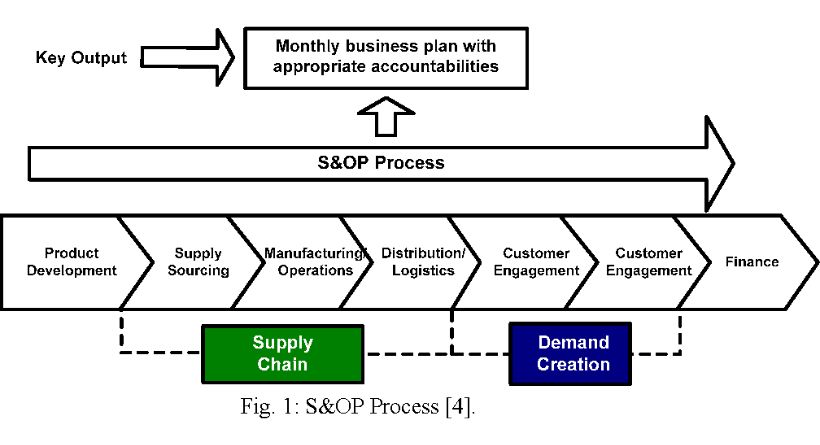Are you struggling to create effective TV ads that captivate your audience and drive results? Are you unsure about how to make the most of this powerful advertising medium? If so, you’re in the right place. In this ultimate guide to TV ads, we will address the challenges you face in crafting compelling television commercials and provide you with the solutions you need to succeed.
At times, it can be overwhelming to navigate the intricacies of TV advertising. The ever-evolving media landscape, changing viewer habits, and fierce competition can leave you feeling lost and uncertain. But fear not! We have the expertise and knowledge to guide you through this dynamic world of TV ads.
Throughout this comprehensive guide, we will walk you through the process of creating TV ads that grab attention, resonate with your target audience, and drive desired actions. We’ll provide you with actionable strategies, tips, and best practices to ensure your television commercials deliver the results you seek.
The Power of TV Ads
Television advertising holds immense power when it comes to reaching and influencing audiences. It remains one of the most effective mediums for capturing attention and driving brand awareness. Understanding the impact and reach of television advertising is crucial for maximizing the potential of your marketing efforts.
Television ads have a unique ability to engage viewers through a combination of visual and auditory elements. They can tell compelling stories, evoke emotions, and leave a lasting impression on the audience. Unlike other mediums, TV ads offer a captive audience, as viewers actively tune in to watch their favorite shows or events.
Furthermore, TV ads provide the advantage of broad reach and mass exposure. They can target specific demographics and reach a wide range of viewers simultaneously, making it an ideal platform for both local and national campaigns. Whether you’re promoting a new product, launching a brand, or creating awareness for a cause, TV ads can generate significant impact.
However, it’s important to acknowledge the changing landscape of TV viewership. With the rise of streaming services and digital platforms, viewers now have more options and control over their content consumption. As a result, advertisers must adapt their strategies to reach audiences across traditional TV channels, streaming services, and online platforms.
Planning and Production Process

Creating effective TV ads requires a strategic and well-planned approach. It involves a series of steps, from conducting market research to post-production editing. By following a systematic process, you can ensure that your TV ads align with your marketing objectives and resonate with your target audience.
Conducting market research and competitive analysis: Before diving into TV ad production, it’s essential to understand your target market, their preferences, and the competitive landscape. Conduct thorough market research and gather insights that inform your creative decisions.
Setting campaign objectives and goals: Clearly define the objectives and goals of your TV ad campaign. Are you aiming to increase brand awareness, drive sales, or promote a specific product? Setting measurable goals allows you to evaluate the success of your TV ads.
Developing a media buying strategy: Determine the TV channels, time slots, and frequency that best align with your target audience and campaign goals. Consider factors such as viewer demographics, program content, and budget constraints.
Scriptwriting and storyboarding: Craft a compelling script that delivers your message effectively within the time constraints of a TV ad. Storyboarding helps visualize the sequence of shots and ensures a cohesive narrative.
Production considerations and best practices: During production, pay attention to aspects such as casting, location scouting, set design, and cinematography. Implement best practices to ensure high production value and a polished final product.
Post-production editing and enhancements: Once the footage is captured, the editing process begins. This includes selecting the best shots, adding graphics or visual effects, incorporating music or voiceovers, and fine-tuning the overall presentation.
By following these steps, you can streamline the planning and production process of your TV ads, ensuring that they are strategically aligned with your marketing objectives and effectively communicate your message to the intended audience.
Also Read: Frenchweb.fr : What is the definition of Cash Out? 2023
Optimizing Performance and Measuring Success
Creating TV ads is just the first step. To maximize their effectiveness, you need to optimize their performance and measure their success. This requires continuous monitoring, analysis, and optimization based on key performance metrics.
Selecting the right TV channels and time slots: Carefully choose the TV channels and time slots that align with your target audience’s viewing habits. Consider factors such as viewership ratings, program genres, and demographics to ensure maximum exposure to your desired audience.
Monitoring and analyzing key performance metrics: Track and analyze metrics such as reach, frequency, and audience engagement to gauge the effectiveness of your TV ads. Use tools like Nielsen ratings or digital platforms’ analytics to gain insights into viewer behavior and campaign performance.
A/B testing and experimentation: Experiment with different versions of your TV ads to identify the most impactful elements. Conduct A/B testing to compare variations in messaging, visuals, or calls-to-action and optimize your ads accordingly.
Tracking and attribution of conversions: Establish mechanisms to track conversions and attribute them to your TV ads. Use unique URLs, promo codes, or dedicated phone numbers to track the response generated by your TV campaign.
Making data-driven optimizations: Continuously review the performance data and make data-driven optimizations to improve the effectiveness of your TV ads. Identify areas for improvement, adjust your media buying strategy, refine your messaging, or target specific viewer segments.
By optimizing the performance of your TV ads and measuring their success, you can refine your strategies and achieve better results over time.
Overcoming Challenges and Common Pitfalls

Creating impactful TV ads comes with its fair share of challenges. However, with careful planning and a strategic approach, you can navigate these obstacles and maximize the effectiveness of your television advertising campaigns
Dealing with budget limitations: Budget constraints are a common challenge when it comes to TV advertising. However, there are ways to make the most of your resources. Consider targeting specific time slots or channels that align with your target audience. By focusing your efforts on reaching a more relevant audience, you can optimize your budget and increase the chances of generating a positive return on investment (ROI).
Adapting to evolving viewer habits and preferences: Viewer habits and preferences are constantly evolving in today’s digital age. With the rise of streaming services and on-demand content, traditional TV viewership has fragmented. To overcome this challenge, consider incorporating digital elements into your TV ads. Use interactive features, social media integration, or personalized messaging to engage viewers and align with their preferences.
Balancing creativity with effectiveness: Striking the right balance between creativity and effectiveness can be a delicate task. While it’s important to create visually stunning and memorable ads, it’s equally crucial to ensure that they effectively communicate your brand message and drive desired actions. Focus on crafting a compelling narrative or story that resonates with your target audience while aligning with your campaign objectives.
Addressing regulatory and compliance issues: TV advertising is subject to various regulations and compliance standards. It’s essential to stay informed and ensure that your ads meet the guidelines set by regulatory bodies. Familiarize yourself with advertising codes and guidelines related to content, disclosures, and endorsements. By adhering to these regulations, you can maintain trust with your audience and avoid potential legal repercussions.
Handling crisis situations and negative feedback: In the world of TV advertising, unforeseen circumstances and negative feedback can arise. Whether it’s a product issue, a controversial ad, or a PR crisis, it’s crucial to have a crisis management plan in place. Be prepared to address any concerns promptly, be transparent with your audience, and take appropriate steps to rectify the situation. Swift and effective communication can help mitigate the impact of negative situations and maintain your brand’s reputation.
By acknowledging and proactively addressing these common challenges and pitfalls, you can overcome obstacles and optimize the impact of your TV advertising efforts. Stay adaptable, remain attuned to your audience’s preferences, and continuously evaluate and refine your strategies to ensure the success of your TV ad campaigns.
Stay tuned for the next section of our “Guide to TV Ads” where we will explore the planning and production process, providing you with valuable insights and practical tips to bring your TV ad campaigns to life.
Conclusion
Congratulations! You have now gained a comprehensive understanding of the power of TV ads and the intricacies involved in creating successful campaigns. Throughout this guide, we have explored the impact and reach of television advertising, delved into the planning and production process, discussed strategies for optimizing performance and measuring success, and addressed common challenges and pitfalls.
By applying the knowledge and insights shared in this guide, you are well-equipped to navigate the dynamic landscape of TV advertising. Remember, a well-crafted TV ad has the potential to captivate audiences, generate brand awareness, and drive desired actions. Whether you are a business owner, marketer, or advertiser, the strategies and best practices outlined here will empower you to create compelling and effective TV ad campaigns.
As you embark on your TV ad journey, keep in mind that it’s a continuous learning process. Stay updated with industry trends, monitor the evolving viewer habits, and adapt your strategies accordingly. Regularly evaluate and analyze your campaign performance to make data-driven optimizations and ensure the highest possible ROI.
Now it’s time for you to dive into the guide and elevate your TV ad game. Whether you are a newcomer or an experienced professional, there’s always room to refine your skills and explore new possibilities. So, grab your pen and paper, or open up your favorite note-taking app, and start implementing the strategies and techniques shared in this guide.
Remember, success in TV advertising comes with practice, creativity, and perseverance. Embrace the challenges, learn from the journey, and celebrate your achievements along the way. We believe in your ability to create impactful and memorable TV ads that will resonate with your target audience and drive your business forward.







